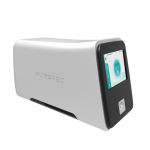Tandem Mass Spectrometry Imaging Enables High Definition for Mapping Lipids in Tissues
Mass spectrometry imaging (MSI) of lipids in biological tissues is useful for correlating molecular distribution with pathological results, which could provide useful information for both biological research and disease diagnosis. It is well understood that the lipidome could not be clearly deciphered without tandem mass spectrometry analysis, but this is challenging to achieve in MSI due to the limitation in sample amount at each image spot. Here we develop a multiplexed MS2 imaging (MS2I) method that can provide MS2 images for 10 lipid species or more for each sampling spot, providing spatial structural lipidomic information. Coupling with on-tissue photochemical derivatization, imaging of 20 phospholipid C=C location isomers is also realized, showing enhanced molecular images with high definition in structure for mouse brain and human liver cancer tissue sections. Spatially mapped t-distributed stochastic neighbor embedding has also been adopted to visualize the tumor margin with enhancement by structural lipidomic information.
In this work, we developed an AP-MALDI-MS2I method that is capable of multiple MS/MS analysis of lipid structures in each sampling spot of the tissue sections. The system consisted of a miniature dual-LIT mass spectrometer, making it possible to be used for on-site applications. The APMALDI-MS2I method enables as many as 10 MS/MS experiments in a single scan. Using mouse brain sections for demonstration, the MS2I method also showed better sensitivity for phospholipid species than conventional MSI method. Coupling with on-tissue photochemical derivatization, the method was also capable of imaging of multiple phospholipid C=C isomers in tissue samples. The good sensitivity of this method allowed for characterization of multiple phospholipid C=C isomers in the tissue sections, which would be useful in discover of new lipid isomer biomarkers through spatial lipidomic analysis. In the future for designing hybrid instruments, the dual-LIT configuration could certainly be used in conjunction with a high resolution mass analyzer, such as an orbitrap or a TOF, to enable both high-efficiency MS/MS and high mass accuracy as well as high mass resolution for MSI.
Angewandte Chemie International Edition, 2023, 62, e202214804,(IF: 16.6),


